
How Roofers Improve Your Roof Ventilation So It Lasts Longer
Roofers not only help keep your roof in prime condition, but they can also improve your roof ventilation so it lasts longer.
You might think that extreme weather is the factor that wears your roof out the fastest. While weather does gradually wear down a roof, there’s something else that can damage it more.
An often overlooked–but critical–part of any home is proper roof ventilation. Good ventilation will help your roof last longer and keep your energy bills low. This guide will teach you everything you need to know about roof ventilation, from why it’s important to how it’s done and what the benefits are to you.
How Roofers Ventilate Your Home
Ventilation works by letting out hot air from your home’s attic. Proper roof ventilation takes in cool air while it lets the hot air out. These two directions of airflow are called intake and exhaust.
Roofing companies will place both intake and exhaust vents when they install a new roof. They can also install vents in an existing roof if needed.
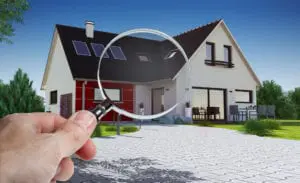

There are many kinds of exhaust vents, but the most common are ridge vents, louvers, and fans. Ridge vents aren’t typically visible from the street level, whereas louvers and fans are. Fans also require power, either from solar panels or from the house’s electrical system.
The most common kind of intake vent is a soffit vent. These look similar to the grates you might have over your HVAC vents inside your home. Soffit vents, however, are commonly installed under the eaves of your home in a place called the soffit (hence the name).
Ventilation Improvements
Appropriate ventilation is more than throwing a couple of vents in the roof. It’s important to make sure there is a balance between intake and exhaust vents or the ventilation system won’t work.

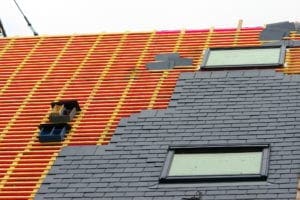
Improving roof ventilation can be as simple as adding a vent or as complicated as removing vents and partially re-roofing the home. When you’re checking to see if you have the right ventilation system, verify that there is:
- one intake and one exhaust vent for every 150-300 square feet of attic
- an equal number of intake and exhaust vents
- only one type of exhaust vent
All of these factors will help keep your ventilation system balanced. If you have more than one type of exhaust, the system could get confused, and exhaust vents could start acting as intake vents.
If you have too many vents or not enough, the system will similarly break down. A good way to check the balance on your vent system is to go into your attic and take the temperature. Your attic should be within 10 to 15 degrees Farenheight of the outside temperature at all times if the ventilation system is balanced.
For an unbalanced system, a roofing company can add or subtract vents or even adjust the type of exhaust vent you’re using to be compatible with your roof shape.
Why Roof Ventilation is Important
So why does any of this matter, and how does it help your roof last longer?
Good roof ventilation keeps the amount of moisture in your attic and under your shingles low. It helps prevent mold and mildew, shingle rot, and damage to the edges of your roof.

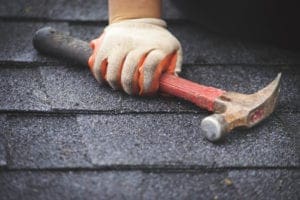
While most roofs will need replacing approximately every twenty years, roofs with poor ventilation will need repairs much sooner. If the ventilation is bad enough, you could even need a whole new roof within a few years.
In addition to saving you on roof repairs, proper attic ventilation will also save you energy. Balanced ventilation helps keep the temperature stable in your home, so your HVAC system doesn’t have to work as hard to keep your house warm in the winter and cool in the summer.
When your ventilation system isn’t working, there are signs you can watch for in either season.
What Happens to Roofs in Hot Weather
The most obvious sign of bad ventilation in your roof during warm weather is shingle damage. Loose or broken shingles might not be immediately visible from the ground, but a quick survey of your roof should give you a clear picture of their condition.
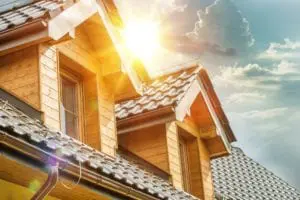
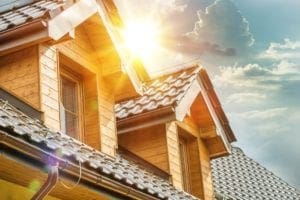
It can also get dangerously hot in a poorly ventilated attic during the summer months. As heat rises from the lower portion of the house, it gets trapped in the attic. That heat will trap moisture, which will seep into the roofing materials.
That moisture is what damages the shingles. It speeds up shingle rot which can lead to leaks and other problems.
What Happens to a Home Roof in Cold Weather
In the winter, there is a different clue that the ventilation system isn’t working. If the warm air from your home can’t escape, it will heat the attic and roof up, similar to what happens in the summer.
The warm air will melt any snow or ice on the top of your roof. As the water reaches the edge of the eaves, it will freeze again into icicles. These are called ice dams. They can damage your roof, gutters, and eaves when they break.
Like shingle rot, these problems can build up over the season and cause more serious damage to your roof.
All-Weather Problems
Poor roof construction doesn’t just harm your roof. It can wreak havoc on the interior of your house, too.
Regardless of the season, bad ventilation leads to moisture problems. Wet spots on the ceiling, mold, and mildew can all be signs of a ventilation issue.
You might also notice uneven temperatures in your home. Without good ventilation, it’s common for one floor of your house to be much warmer than the other.
Any of these problems could be a sign that it’s time for a professional to take a look at your roof ventilation and make some upgrades.
Improve Your Roof Ventilation Today
If you think you need better roof ventilation, we can help. Request a quote today for your roof repair or replacement needs. Whether you need a few new vents or an entirely new roof, we can connect you with the best professionals for the job.







Leave a Reply